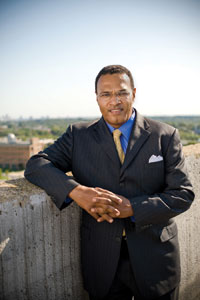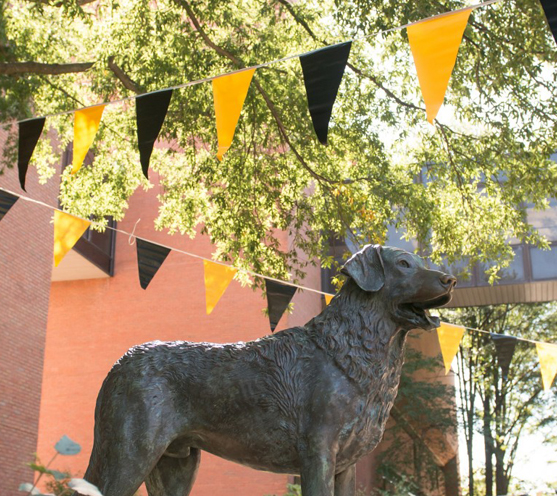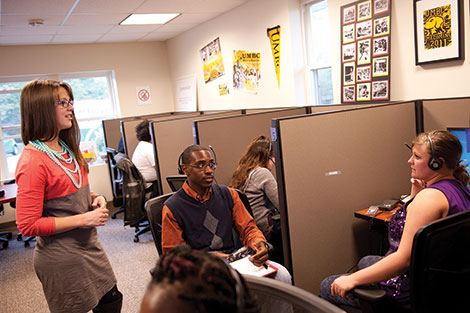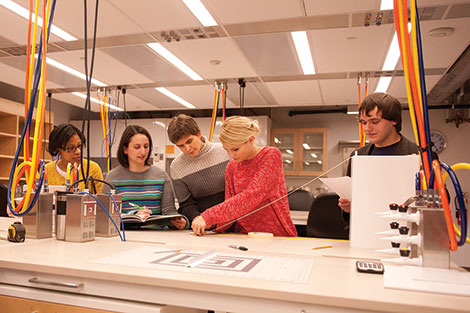UMBC President Freeman A. Hrabowski, III, takes your questions.
Q. UMBC has made significant investments in creating physical spaces where collaboration in pedagogy and research can flourish. And the movement toward a new Interdisciplinary Life Sciences Building promises to take that effort even further. Why is it important that there are physical spaces in which to do this sort of collaboration? And, stepping back and looking at the larger picture: What other research collaboration efforts at UMBC are you most excited about?
– Richard Byrne ’86, English
A. What’s important as we build a new facility, such as the proposed Interdisciplinary Life Sciences Building, is to remember that our faculty are collaborating across disciplines, and that more and more UMBC faculty are collaborating with their colleagues at the University of Maryland, Baltimore (UMB).
Our deans and department chairs are actively looking for ways to work with our new Vice President of Research, Karl Steiner, and with our Provost, Philip Rous, to address different requests for proposals from the National Institutes of Health and National Science Foundation which are increasingly focused on interdisciplinarity.
It’s also important to listen when our Dean of the College of Natural and Mathematical Sciences, William LaCourse, and others say that they need spaces that can be used by people in multiple departments and how the research and the teaching that they do is increasingly being accomplished in teams that solve problems by combining different disciplinary perspectives.
What that all means is that we need flexibility in the research facilities themselves – the sort of flexibility that you see built into in the foundation of our joint project with the Howard Hughes Medical Institute to create the Collaboratory.
We need to be able to make changes in our research facilities as priorities change at national agencies or right here on campus.
As far as research collaborations here at UMBC go, I think the future of our campus is heavily tied to our ability to collaborate with University of Maryland, Baltimore. We are increasingly working with the different schools there, including medicine and pharmacy. More and more faculty are getting to know each other at both campuses and looking at ways they can collaborate. So we will see collaborations on cybersecurity and health care, or between environmental science and health.
There are exciting new state initiatives that are going to help us do this. They will help us build research endowments and to boost the research park and other research infrastructure on our campus – by supporting research faculty and emphasizing not only tech commercialization, but also broader research on campus in disciplines that extend beyond science and engineering. The latter is particularly important as we think about the policy implications of our work and as we attack problems that pose major challenges in our society, including the achievement gap and income inequality.
UMBC will be seen as a major driver of the economy, not just because of our science and engineering infrastructure and strengths, but also more importantly and more broadly, because faculty are working across disciplines to solve problems in our society and to create a cadre of leaders – humanists, artists, policymakers, teachers, social workers – who can address critical problems in the wider world.
That is why we have invested heavily as a university in creating spaces where faculty and students in the arts and humanities and social sciences can collaborate with each other. It’s important that our pioneering Imaging Research Center, one of the engines of interdisciplinary research and collaboration, is located on the first floor of the Information Technology and Engineering Building. We also are only months away from the opening of the second phase of our Performing Arts and Humanities Building. Soon, our music and dance students will have new spaces to explore their arts in the same way that our theatre and English students have explored new vistas in the first phase of the building.
We have tangible strengths and opportunities across disciplines at UMBC – and we’re finding the spaces to nurture them so that they grow even stronger.
To send a question to President Hrabowski, click here.
Tags: Winter 2014




